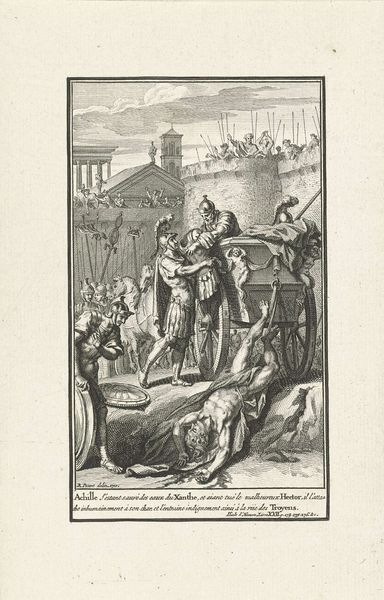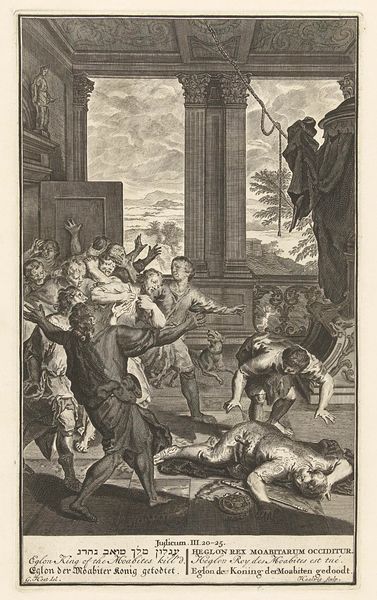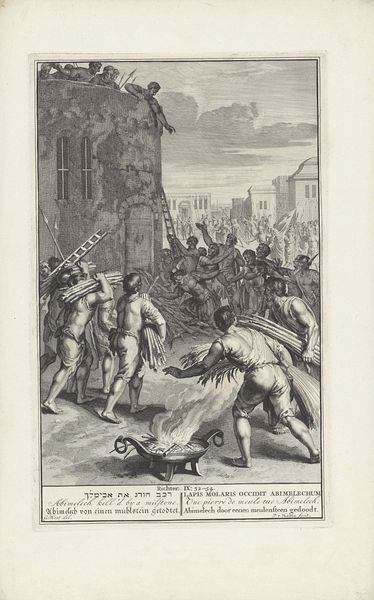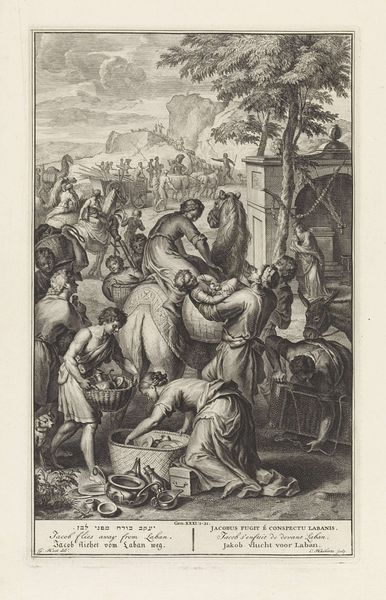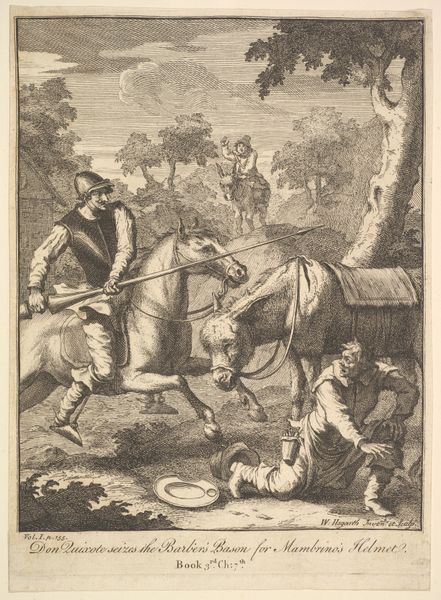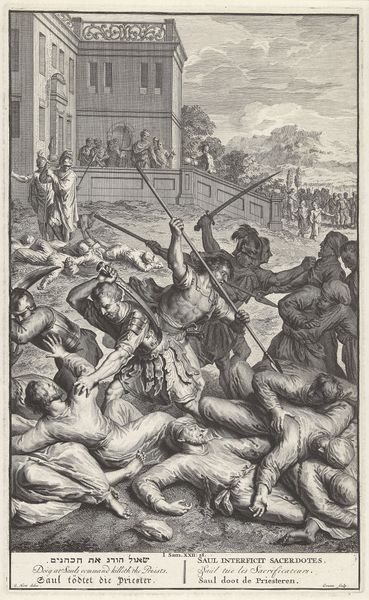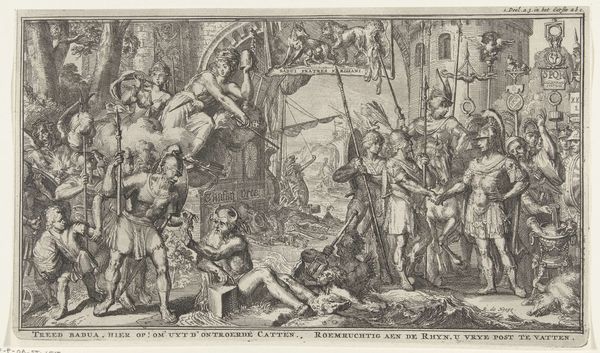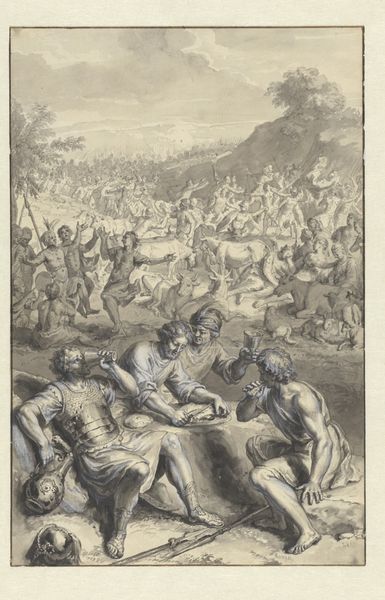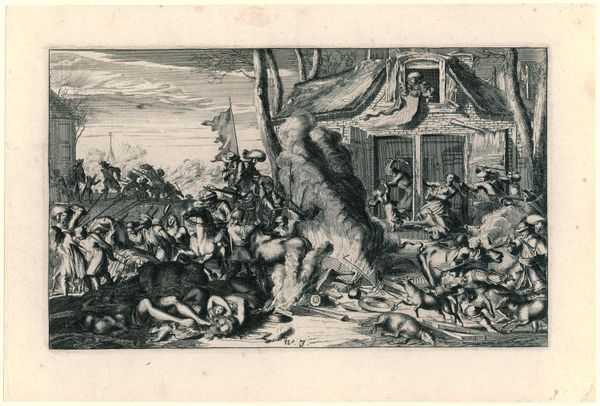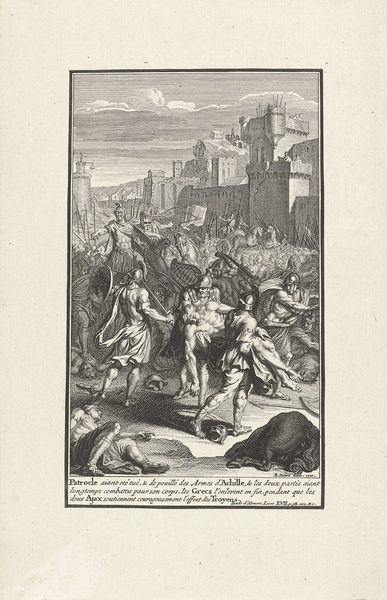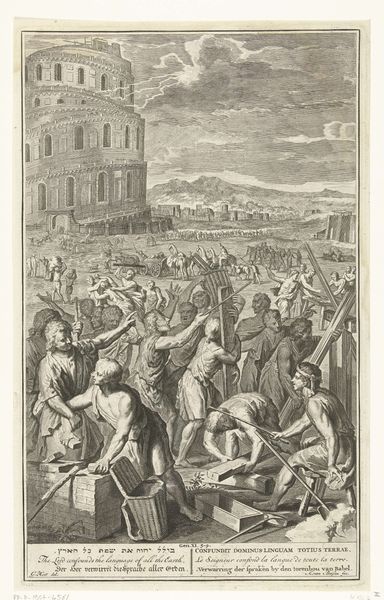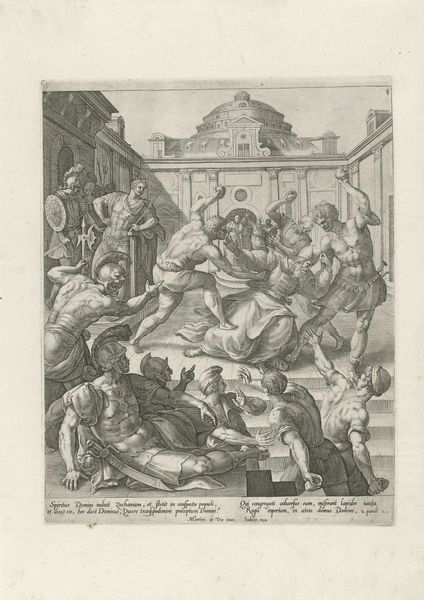
print, ink, engraving
#
portrait
#
ink drawing
#
allegory
#
baroque
# print
#
figuration
#
ink
#
surrealism
#
line
#
history-painting
#
engraving
Dimensions: height 555 mm, width 470 mm
Copyright: Rijks Museum: Open Domain
This etching, *Triumph of King William III*, was made in 1697 by Jan van Vianen. The image is achieved through a labor-intensive, indirect printing process, a chemical procedure where acid is used to cut into a metal plate to create a design. The plate is then inked and used to print multiple images. Notice how the etching process gives the image a distinctive, slightly rough texture. The varying line widths and densities create areas of light and shadow, lending depth and visual interest to the scene. The sharp lines and precise details allowed van Vianen to depict complex scenes with many figures and symbolic elements. The printmaking process allowed for distribution, furthering William's legacy and underscoring the propaganda function of the artwork. Although seemingly distant from the world of labor, printmaking was a painstaking task, one that involved both skilled craftsmanship and industry, tied to systems of production and distribution. Recognizing this helps us appreciate the material choices and the making process, providing a richer understanding of the artwork and its place in history.
Comments
No comments
Be the first to comment and join the conversation on the ultimate creative platform.
